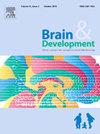Pelizaeus-Merzbacher病的分子病理学和治疗
IF 1.3
4区 医学
Q4 CLINICAL NEUROLOGY
引用次数: 0
摘要
Pelizaeus-Merzbacher病(PMD)是低髓鞘性白质营养不良症中最常见和最具代表性的疾病,影响中枢神经系统的髓磷脂。PMD是由PLP1基因的各种突变引起的,包括最常见的重复、点突变(通常导致严重的形式)、缺失/空突变(导致较轻的形式),以及与早期髓鞘结构(HEMS)相关的深部内含子突变,这是一种具有特征性MRI表现的轻度变异。已知每种突变类型都会触发不同的细胞和分子机制。了解这些突变特异性病理为开发靶向治疗提供了至关重要的见解。例如,重复突变导致野生型PLP1蛋白的过度表达,从而破坏少突胶质细胞的髓鞘形成,这表明基因抑制可能是一种潜在的治疗策略。正在研究的治疗方法包括反义寡核苷酸和人工miRNA基因治疗。另一方面,突变PLP1蛋白的点突变通常赋予细胞毒性,这与内质网应激反应、铁下垂和分泌途径中的细胞内运输功能障碍有关。因此,针对这些分子机制的治疗方法正在被探索,包括反义寡核苷酸和铁螯合剂。鉴于这些进展,预计PMD在不久的将来可能成为一种可治疗的疾病并不过于乐观。本文章由计算机程序翻译,如有差异,请以英文原文为准。
Molecular pathologies and therapies for Pelizaeus-Merzbacher disease
Pelizaeus-Merzbacher disease (PMD) is the most common and representative disorder among hypomyelinating leukodystrophies, affecting myelin in the central nervous system. PMD is caused by various mutations in the PLP1 gene, including the most common duplications, point mutations (which often lead to severe forms), deletions/null mutations (resulting in milder forms), and deep intron mutations associated with hypomyelination of early myelinated structures (HEMS), a mild variant with characteristic MRI findings. Each mutation type is known to trigger distinct cellular and molecular mechanisms. Understanding these mutation-specific pathologies provides crucial insights for developing targeted therapies. For instance, duplication mutations lead to overexpression of the wild-type PLP1 protein, which disrupts myelination by oligodendrocytes, suggesting that gene suppression could be a potential treatment strategy. Therapeutic approaches under investigation include antisense oligonucleotides and artificial miRNA gene therapy. On the other hand, point mutations in mutant PLP1 proteins often confer cytotoxicity, which has been linked to endoplasmic reticulum stress responses, ferroptosis, and intracellular transport dysfunction within the secretory pathway. As a result, therapies targeting these molecular mechanisms are being explored, including antisense oligonucleotides and iron chelators. Given these advancements, it is not overly optimistic to anticipate that PMD could become a treatable disease in the near future.
求助全文
通过发布文献求助,成功后即可免费获取论文全文。
去求助
来源期刊

Brain & Development
医学-临床神经学
CiteScore
3.60
自引率
0.00%
发文量
153
审稿时长
50 days
期刊介绍:
Brain and Development (ISSN 0387-7604) is the Official Journal of the Japanese Society of Child Neurology, and is aimed to promote clinical child neurology and developmental neuroscience.
The journal is devoted to publishing Review Articles, Full Length Original Papers, Case Reports and Letters to the Editor in the field of Child Neurology and related sciences. Proceedings of meetings, and professional announcements will be published at the Editor''s discretion. Letters concerning articles published in Brain and Development and other relevant issues are also welcome.
 求助内容:
求助内容: 应助结果提醒方式:
应助结果提醒方式:


